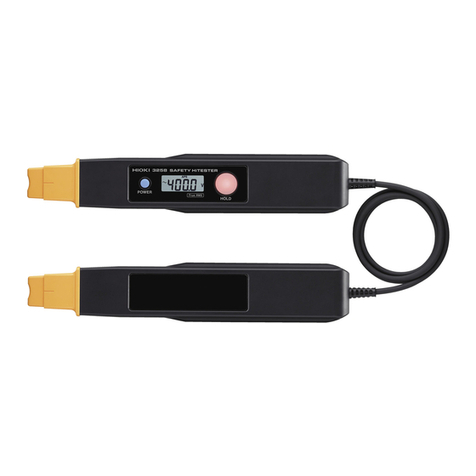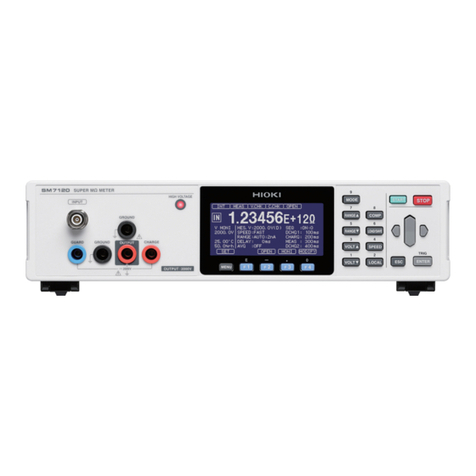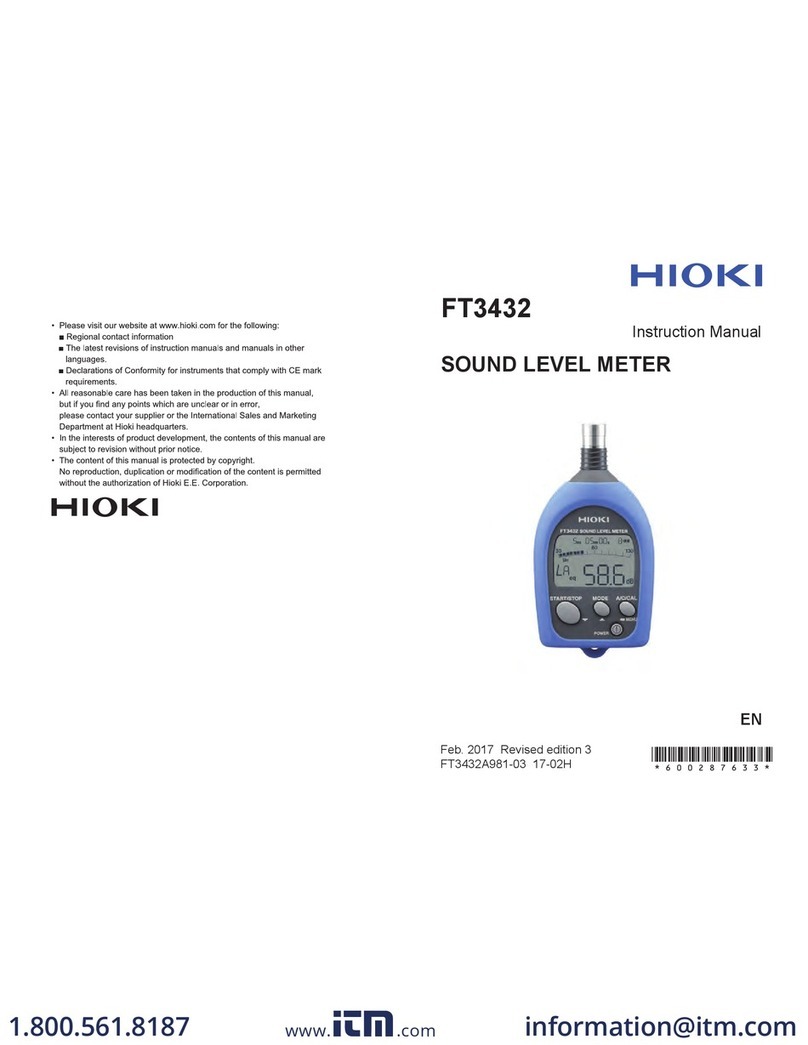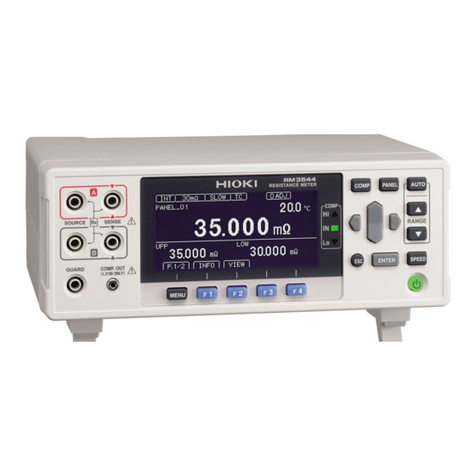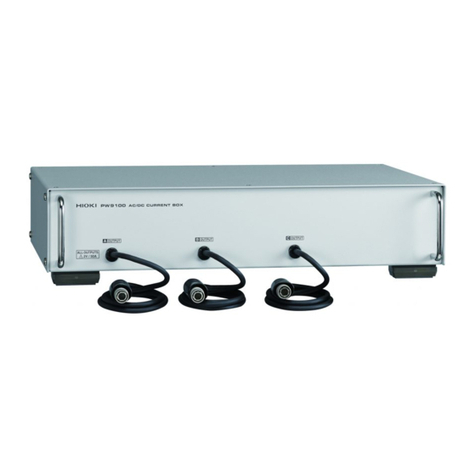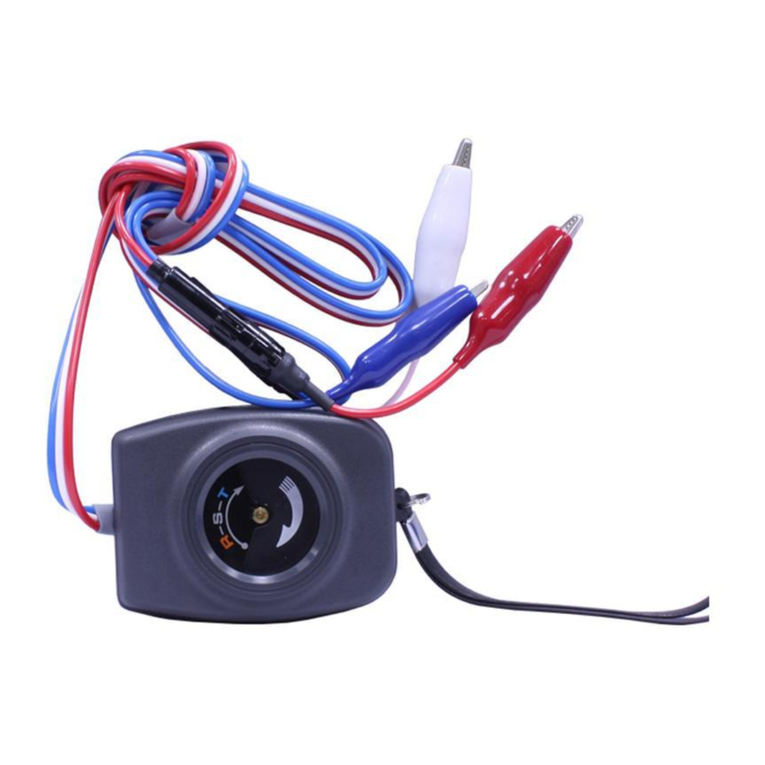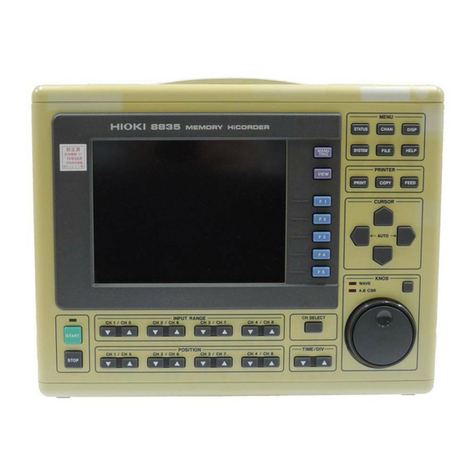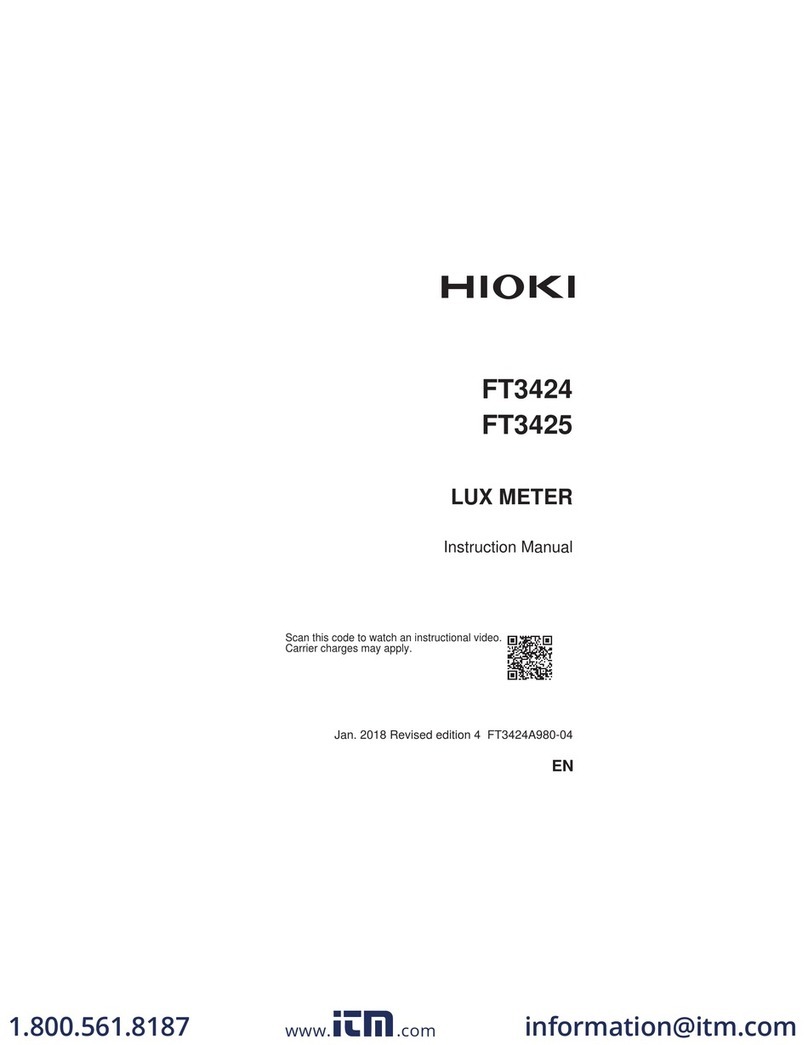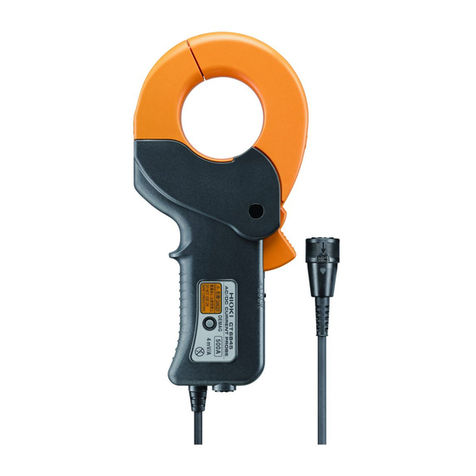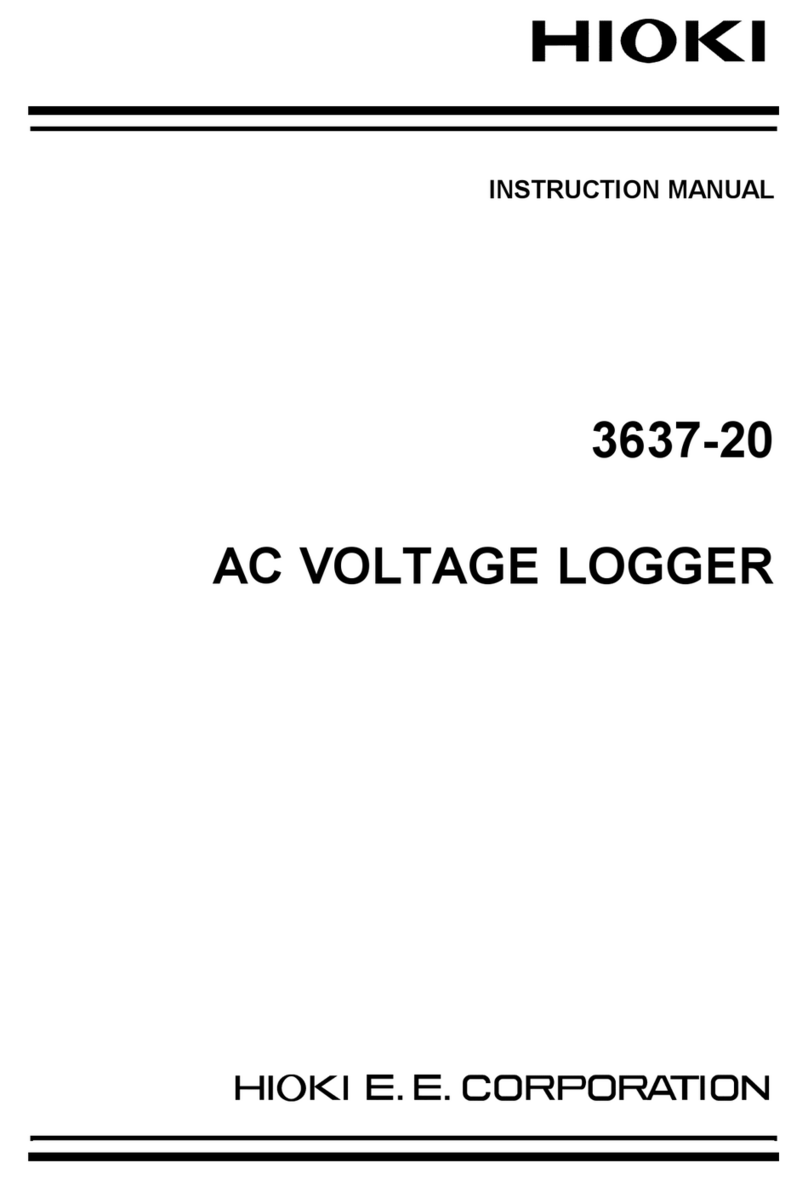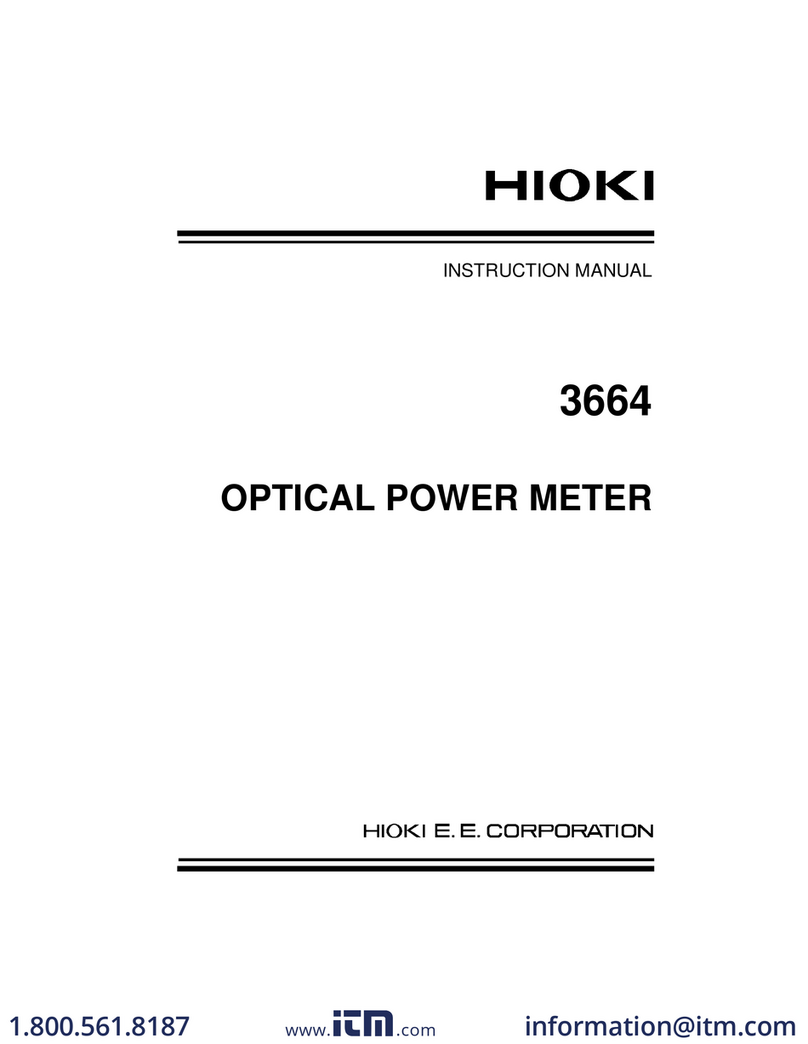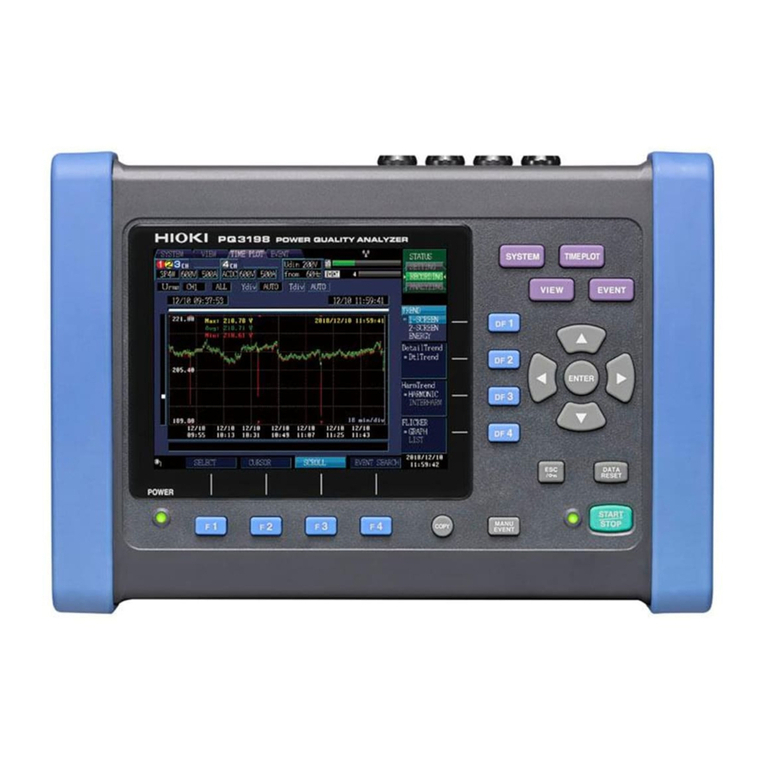
Contents
ii
5.6 Initializing the Instrument
(System Reset) .................................73
5.7 Factory Settings ...............................74
Chapter 6 Monitoring
InstantaneousValues
(VIEW Screen) 75
6.1 Using the VIEW screen ....................75
6.2 Displaying Instantaneous
Waveforms ........................................76
6.3 Displaying Phase Relationships
([VECTOR] Screen) ..........................80
6.4 Displaying Harmonics ......................83
Displaying harmonics as a bar graph.. 83
Displaying harmonics as a list ............. 86
6.5 Displaying Measured Values
Numerically (DMM Screen) ..............89
Chapter 7 Monitoring
Fluctuations in
Measured Values
(TIME PLOT
Screen) 91
7.1 Using the [TIMEPLOT] Screen ........93
7.2 Displaying Trends ............................94
7.3 Displaying detailed trends .............101
Displaying a detailed trend graph for
each TIMEPLOT interval.................. 101
7.4 Displaying Harmonic Trends .........107
7.5 Displaying Flicker Values in Graph
and List Form ..................................111
IEC flicker meters and V10 flicker
meters .............................................. 111
Displaying an IEC flicker fluctuation
graph ................................................. 111
Displaying an IEC flicker list.............. 114
Displaying a V10 flicker fluctuation
graph ................................................. 115
Displaying a V10 flicker list............. 118
Chapter 8 Checking Events
(EVENT screen) 119
8.1 Using the EVENT screen ............... 120
8.2 Displaying the Event List .............. 121
8.3 Analyzing the Measurement Line
Status When Events Occur ........... 124
8.4 Analyzing Transient Waveforms .. 126
8.5 Viewing High-order Harmonic
Waveforms ..................................... 129
8.6 Checking Fluctuation Data ........... 132
Chapter 9 Data Saving and File
Operations
(SYSTEM-MEMORY
screen) 135
9.1 [MEMORY] Screen ......................... 135
9.2 Formatting SD Memory Cards ...... 138
9.3 Save Operation and File Structure 139
9.4 Saving, Display and Deleting
Measurement Data ......................... 141
9.5 Saving, Displaying, and Deleting
Screen Copies ................................ 144
9.6 Saving and Deleting Settings Files
(Settings Data) ............................... 145
9.7 Loading Settings Files
(Settings Data) ............................... 146
9.8 File and Folder Names .................. 146
Changing file and folder names ........ 146
Chapter 10 Analyzing Data
Using the Computer
Application
(9624-50) 147
10.1 Computer Application (9624-50) Capa-
bilities ............................................. 147
10.2 Downloading Data from the SD Memo-
ry Card ............................................ 148
